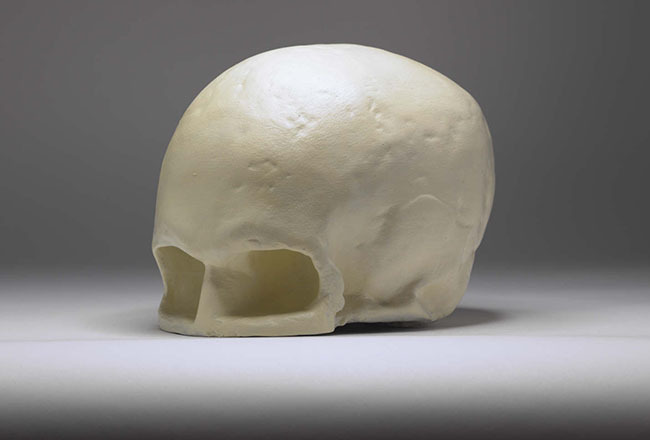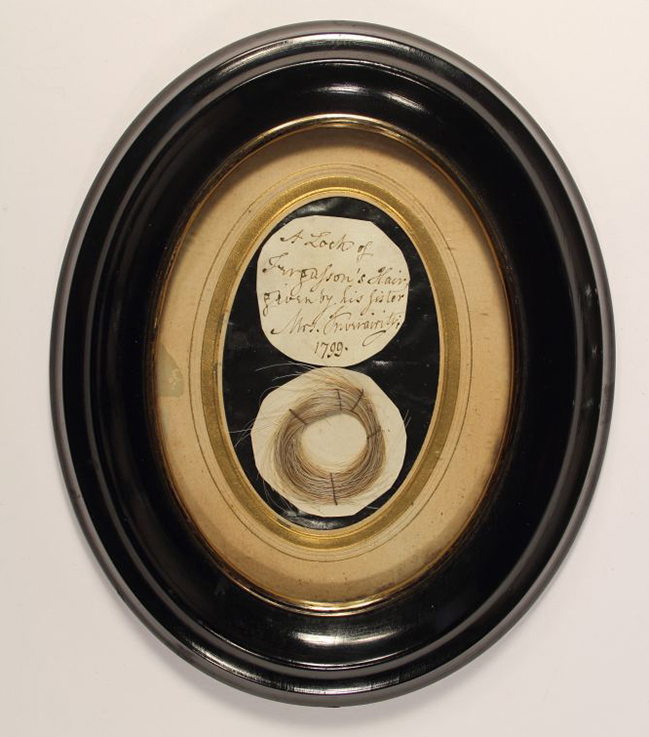Fascinating items related to Robert Burns are being put on show by Museums and Galleries Edinburgh.
A plaster cast of Rabbie’s skull, a lock of hair belonging to The Bard’s wife and Burns’ draft of ‘Scots wha hae’ (Bruce’s address to his troops at Bannockburn) are just a few of the fascinating personal items linked to Scotland’s national poet to be uncovered across Edinburgh’s much loved museums and monuments, writes Stacey Wylie.
With Burns Night 2018 fast approaching, Museums and Galleries Edinburgh offers up a captivating and cost effective way to celebrate the birthday of Scotland’s much loved poet and lyricist with an exploration of stories, highlights and monuments linked to Robert Burns across the city.

A plaster cast of the skull of Robert Burns
The Writers’ Museum holds an outstanding collection of personal objects, published works and manuscripts including; Burns’ writing desk, an umbrella owned by Burns, a lock of hair of Jean Armour, Burn’s wife, the certificate accepting him in to the Royal Company of Archers, 1792, a ceremonial unit acting as the sovereign’s bodyguard in Scotland who competed in an annual archery competition and somewhat more unusually, a plaster cast of Burns’ skull, one of only three ever made.
To mark the Bards’ birthday on Thursday, 25 January, the Writers’ Museum will host an informal tribute to Robert Burns with an afternoon of fiddle music and poetry. The event will take place from 2–3.30pm with no need to book in advance.
The Museum of Edinburgh houses a copy of The New Town Plan which offers a timely insight into the Edinburgh Burns knew – as the New Town was being built during his time in the city. The museum is also home to a flat oatcake which was believed to have been made by Jean Armour, Burns’ wife.
The collection also features the stunning Burns Monument, which will be opened up to visitors from 10am to 5pm on Saturday 27th and noon to 5pm on Sunday 28th to mark celebrations this month as part of the Burns Unbroke Festival. Overlooking the city on Regent Road, the 70-foot high Grecian-style temple was designed by Sir Thomas Hamilton and funded by public subscriptions. The Monument is surrounded by landscaped gardens with laurels, hollies and Ayrshire roses.

A lock of Jean Armour’s hair
Out with the city centre, a bronze statue of Burns by D. W. Stevenson sits on Constitution Street in Leith and was erected by the Leith Burns Club and gifted to The Lord Provost of Leith in 1898.
During his time in Edinburgh, the ‘ploughman poet’ made a significant and lasting impression, one that can still be felt and celebrated today across the Museums & Galleries Edinburgh collections, which are free to enter.
Councillor Donald Wilson, culture and communities convener for the City of Edinburgh Council, said: ‘The impact of Robert Burns on Edinburgh and Scotland cannot be underestimated. The streets he walked in the city and the people he met were of course a great inspiration in his work, and from our statue of Burns in Leith to the Monument dedicated to his memory at Regent Road, his influence is still felt all over the city.’
Gillian Findlay, curatorial and engagement manager with Museums & Galleries Edinburgh said: ‘Burns’ legacy is phenomenal. Not only is he considered a creative genius, Scotland’s national poet and our ‘favourite Scot ever’ according to a recent poll by STV – but around the world his works are justly celebrated for their romanticism, liberalism and the compassion and humour they express about the human condition.’
TAGS

